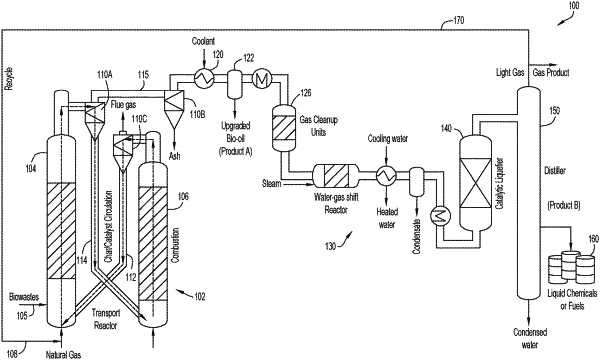| CPC C10G 1/086 (2013.01) [B01J 29/405 (2013.01); B01J 37/0027 (2013.01); B01J 37/031 (2013.01); B01J 37/06 (2013.01); B01J 37/088 (2013.01); C10G 5/00 (2013.01); C10G 2300/1003 (2013.01); C10G 2300/1011 (2013.01); C10G 2300/202 (2013.01); C10G 2300/308 (2013.01); C10G 2300/4006 (2013.01); C10G 2300/4012 (2013.01)] | 11 Claims |

|
1. A method for the valorization of an organic solid biomass feedstock for liquid fuel and/or chemical productions, the method comprising:
introducing an organic solid biomass feedstock into a reaction zone of a pyrolysis reaction system in presence of methane and a pyrolysis catalyst structure to convert the organic solid biomass feedstock to a liquid bio-oil product and a synthetic gas product, wherein the pyrolysis catalyst structure comprises a porous support structure including one or more of an aluminum oxide, an aluminosilicate material, and a silicon oxide, and a plurality of metals loaded in the porous support structure, the plurality of metals consisting of Ga, Ce and Zn;
circulating the pyrolysis catalyst structure between the reaction zone and a regeneration zone, wherein carbonaceous material deposited on the pyrolysis catalyst structure is oxidized and removed from the pyrolysis catalyst structure within the regeneration zone to form a regenerated pyrolysis catalyst structure, and the regenerated pyrolysis catalyst structure is directed from the regeneration zone to the reaction zone;
introducing the synthetic gas product into a liquefaction reaction system in presence of a second gas and a liquefaction catalyst structure to convert the synthetic gas product to a liquid oil product; and
providing a gaseous product exiting the liquefaction reaction system as an input to the pyrolysis reaction system.
|